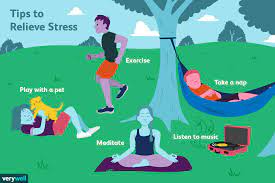Understanding Fear, Cowardness and Anxiety: Symptoms, Causes, and Treatment in 2025
Fear is a common emotion that affects people of all ages. It is a natural response to a perceived threat or danger. Fear can be helpful in keeping us safe, but excessive or irrational fear can interfere with daily life.
-
Lack of control: When we feel like we are not in control of a situation, we may feel a sense of fear or anxiety.
-
Uncertainty: When we are uncertain about the outcome of a situation, we may feel a sense of fear or anxiety.
-
Unfamiliarity: When we are faced with a new or unfamiliar situation, we may feel a sense of fear or anxiety.
-
Past experiences: Traumatic or negative experiences can contribute to the fear of the unknown.
-
Anxiety: Feeling anxious or on edge when faced with an uncertain situation.
-
Apprehension: Feeling apprehensive or fearful about the unknown consequences of a situation.
-
Avoidance: Avoiding situations or events that are unfamiliar or uncertain.
-
Hypervigilance: Being constantly on the lookout for potential threats or dangers.
-
Facing fears: Gradually facing the things that trigger the fear of the unknown can help build confidence and courage.
-
Seeking information: Seeking information and knowledge about the unknown can help reduce uncertainty and fear.
-
Building self-awareness: Building self-awareness and understanding of one’s own thoughts and feelings can help reduce anxiety and fear.
-
Seeking support: Seeking support from friends, family, or a therapist can provide a sense of security and help build confidence.

Symptoms of Fear
Symptoms of fear include a rapid heartbeat, sweating, and trembling. People may also experience nausea, dizziness, and shortness of breath. In severe cases, fear can cause panic attacks, which are intense episodes of fear that can be debilitating.
Causes of Fear
Fear can be caused by a variety of factors, including genetics, environment, and life experiences. Traumatic events, such as accidents or abuse, can trigger fear. Phobias, or irrational fears, can also develop due to genetic and environmental factors.
Diagnosis of Fear
A doctor or mental health professional can diagnose fear by conducting a physical exam and asking questions about symptoms and medical history. They may also use psychological tests, such as questionnaires or interviews, to assess the level of fear.
Treatment of Fear
Treatment for fear depends on the underlying cause and severity of symptoms. Cognitive-behavioural therapy (CBT) is a common treatment for fear, which helps people change negative thought patterns and behaviours. Medications, such as antidepressants or anti-anxiety drugs, may also be prescribed to help manage symptoms.
Effectiveness of Treatment
Studies have shown that CBT is an effective treatment for fear, with a significant reduction in symptoms in many people. Medications can also be effective in managing symptoms but may have side effects such as drowsiness or nausea.
Potential Side Effects of Treatment
Side effects of CBT are rare but may include increased anxiety or emotional distress. Medications can have side effects such as drowsiness, nausea, or headaches. Working with a doctor or mental health professional to find the best treatment plan and minimize side effects is essential.
Fear and Cowardness: Understanding the Difference
Fear and cowardness are two distinct emotions that are often linked together. Fear is a natural response to a perceived threat or danger, while cowardness is the inability to face or overcome fear.
Fear
Fear is a normal emotion that serves as a warning system to protect us from harm. It is a response to a stimulus perceived as threatening or dangerous. Fear can be rational or irrational, and it can be triggered by a variety of factors, including:
Learned behaviour: Fear can be learned through experience or observation. For example, a child may learn to fear dogs if they have a negative experience with one.
Genetics: Fear can be inherited from our parents or ancestors. Some people may be more prone to fear due to their genetic makeup.
Environment: Fear can be triggered by environmental factors, such as a loud noise or a scary situation.
Cowardness
Cowardness, on the other hand, is the inability to face or overcome fear. It is a lack of courage or bravery in the face of danger or uncertainty. Cowardness can be caused by a variety of factors, including:
Fear of failure: A person may be afraid to take risks or face challenges due to a fear of failure.
Lack of confidence: A person may lack confidence in their ability to overcome fear or face challenges.
Past experiences: Traumatic experiences or past failures can contribute to cowardness.
The difference between fear vs anxiety is also based on a difference between emotions that are functional vs excessive and dysfunctional. Fear is an emotional reaction to a specific, real danger, while anxiety is an excessive and unfocused fear that may be triggered by a variety of stimuli. Anxiety caused by stress may persist long after the trigger is removed or arise with no trigger at all.
 How Children Develop Fear
How Children Develop Fear
Children develop fear through a combination of genetic and environmental factors. Here are some ways children may develop fear:
Learning from others: Children may learn to fear certain things by observing others, such as parents or peers.
Personal experiences: Children may develop fear through personal experiences, such as a negative encounter with a dog or a scary situation.
Imagination: Children may develop fear through their imagination, such as fearing monsters or ghosts.
Preconditions for Fear
Children may develop fear when they are not familiar with certain preconditions, such as:
Uncertainty: Children may fear things they do not understand or are uncertain about.
Lack of control: Children may fear situations where they feel a lack of control or power.
Unfamiliar environments: Children may fear new or unfamiliar environments, such as a new school or a new home.
Overcoming Fear
Overcoming fear requires a combination of courage, confidence, and support. Here are some ways to help children overcome fear:
Gradual exposure: Gradually exposing children to the thing they fear can help them become desensitized to it.
Positive reinforcement: Praising and rewarding children for facing their fears can help build confidence and courage.
Support and guidance: Providing children with support and guidance can help them feel more secure and confident in the face of fear.
By understanding the difference between fear and cowardness, and by providing children with the support and guidance they need, we can help them develop the courage and confidence to overcome fear and face challenges with bravery.
Fear, Cowardness, and Anxiety: Understanding the Interconnections
Fear, cowardness, and anxiety are closely related emotions that can have a significant impact on a person’s life. While they are distinct emotions, they can often overlap and influence one another.
Types of Fear
There are several types of fear, including:
Phobias: Irrational fears of specific objects, situations, or activities, such as a fear of spiders or heights.
Social anxiety: Fear of social situations or interactions, such as public speaking or meeting new people.
Agoraphobia: Fear of being in public places or crowds.
Claustrophobia: Fear of enclosed or small spaces.
Cowardness
Cowardness is the inability to face or overcome fear. It can be caused by a variety of factors, including:
Fear of failure: A person may be afraid to take risks or face challenges due to a fear of failure.
Lack of confidence: A person may lack confidence in their ability to overcome fear or face challenges.
Past experiences: Traumatic experiences or past failures can contribute to cowardness.
Anxiety
Anxiety is a feeling of worry or apprehension that can be overwhelming and debilitating. It can be caused by a variety of factors, including:
Stress: Ongoing stress can contribute to anxiety.
Trauma: Traumatic experiences can trigger anxiety.
Genetics: Anxiety can be inherited from our parents or ancestors.
The Anxiety-Fear-Cowardness Cycle

The anxiety-fear-cowardness cycle is a vicious cycle that can be difficult to break. It works like this:
Anxiety: A person experiences anxiety, which can be triggered by a variety of factors.
Fear: The anxiety triggers fear, which can be irrational or rational.
Cowardness: The fear leads to cowardness, which is the inability to face or overcome the fear.
Avoidance: Cowardness leads to avoidance, which is the avoidance of the thing or situation that triggers the fear.
Increased anxiety: The avoidance leads to increased anxiety, which can trigger the cycle again.
Breaking the Cycle
Breaking the anxiety-fear-cowardness cycle requires a combination of courage, confidence, and support. Here are some strategies that can help:
Facing fears: Gradually facing the thing or situation that triggers the fear can help build confidence and courage.
Seeking support: Seeking support from friends, family, or a therapist can provide a sense of security and help build confidence.
Practicing relaxation techniques: Practicing relaxation techniques, such as deep breathing or meditation, can help reduce anxiety and promote calmness.

Building self-esteem: Building self-esteem and confidence can help reduce fear and anxiety.
Fear, cowardness, and anxiety are closely related emotions that can have a significant impact on a person’s life. Understanding the interconnections between these emotions and the anxiety-fear-cowardness cycle can help individuals develop strategies to overcome fear and anxiety and build confidence and courage. By facing fears, seeking support, practising relaxation techniques, and building self-esteem, individuals can break the cycle and live a more fulfilling and meaningful life.
Conclusion
Fear is a common emotion that can be debilitating if left untreated. By understanding the symptoms, causes, and treatment options, people can take the first step towards overcoming fear. With the help of a doctor or mental health professional, people can develop a treatment plan that works for them and improves their quality of life.
Sources:
National Institute of Mental Health (NIMH)
American Psychological Association (APA)
Mayo Clinic
Harvard Health Publishing


